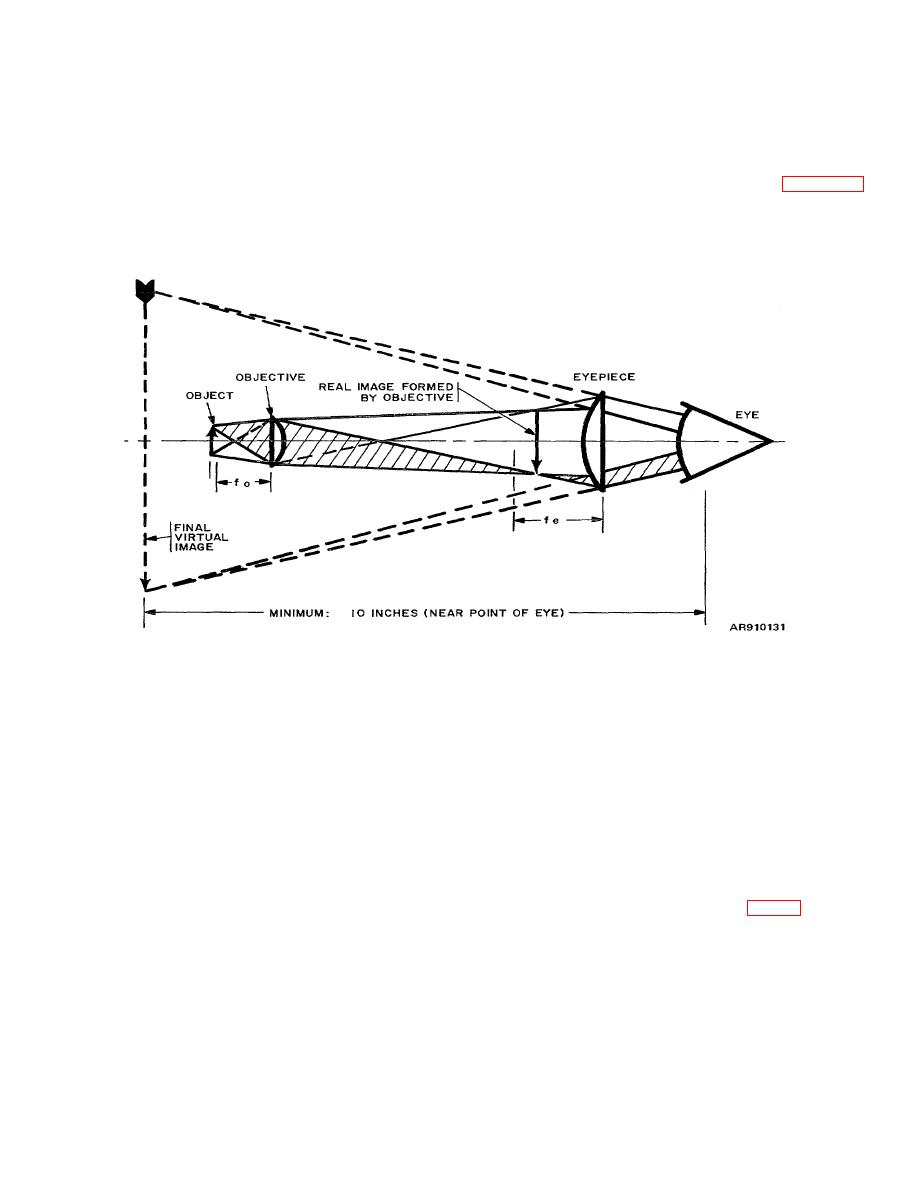 |
|||
|
|
|||
|
Page Title:
Figure 5-3. Simple compound microscope |
|
||
| ||||||||||
|
|
 TM 9-258
tances. If it is recalled that apparent size equals actual
of the eyelens, the image is seen at infinity and no
size divided by distance to object, it should be apparent
accommodation is required. Final image may be formed
that the closer an object is to the eye the larger will be its
at any distance from the eyelens exceeding the shortest
image. The microscope uses an objective lens of
distance of distinct vision (about 10 inches). In this case,
extremely short focal length (fo) which forms a real,
the image formed by the objective lens must be within
enlarged, and inverted image of an object placed just
the principal focus of the eyepiece as in figure 5-3.
behind its principal focus. To view this image, a positive
Magnification in a microscope depends on the focal
eyepiece of short focal length (fe) is used as a magnifier.
lengths of the objective and the eyepiece and the
If the real image is at the first principal focus
distance between them.
Figure 5-3. Simple compound microscope
called either the objective or objective glass (if a mirror)
5-4. Telescopes. Most persons think of telescopes as
which usually forms a real image of the field or area
magnifiers but they may be designed to provide the eye
which the telescope can "see," and an eyelens or
with an image the same apparent size as the object or
eyepiece used to view this image.
This general
they may provide the 'eye with a smaller image which is
description is exactly the same for the microscope,
an example of reduction. The primary purpose of the
except that in the microscope the first image is actually
telescope is to improve vision of distant objects. In its
larger than the object while in the telescope the first
simplest form, it consists of two parts; a lens or mirror
image is smaller than the object.
Section II. ASTRONOMICAL TELESCOPES
cannot be brought to focus by the eye (fig 5-4). The eye
5-5. Refracting Telescopes. Refracting astronomical
must be fed either by parallel rays or rays only slightly
telescopes use lenses to form images through refraction.
diverging as if from an object no closer than the near
A positive lens alone will form only real images of distant
point of the
objects.
Such
real
images
in
space
5-2
|
|
Privacy Statement - Press Release - Copyright Information. - Contact Us |